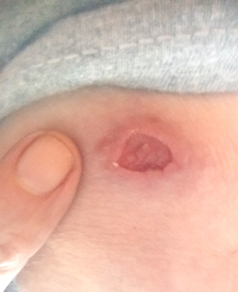
Belize is the home of a wicked little parasite called the sandfly (not the sand flea – those live at the beach and are harmless). The sandfly bite is actually painless. It’s the microscopic parasite that may be in its saliva, invisible to the naked eye and called leishmania protozoa, that can cause a lesion called leishmaniasis (“leish” for short). The local Belizean name for leish is chiclero since these lesions were acquired by chicleros, the workers who extracted gum from chicle trees in the forest.
Sandflies are found in the forest around animal burrows and in cracks of stone or cement walls. Permethrin-impregnated clothing or insect repellent will repel them. Mosquito screens don’t keep out the tiny sandfly.
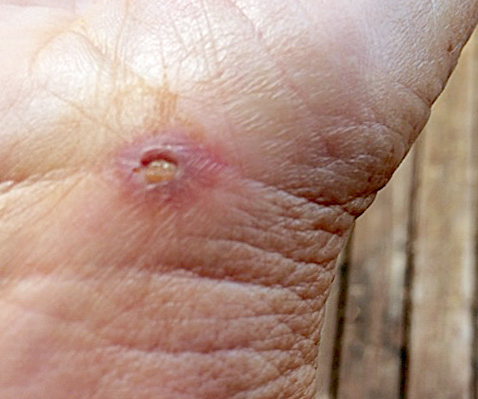
There are three kinds of leish. The Mexican variety, cutaneous leish, which is what we mostly have here in Belize, affects the skin. The sore starts at the site of the bite, and very slowly grows larger over the course of days or weeks. But occasionally there are occurrences of the Brazilian variety, mucocutaneous leish, which affects the mucous membranes of nose, throat and mouth, and the Asian variety, visceral leish, which can be fatal. The latter two can enter the bloodstream and spread through the body, making them more dangerous.
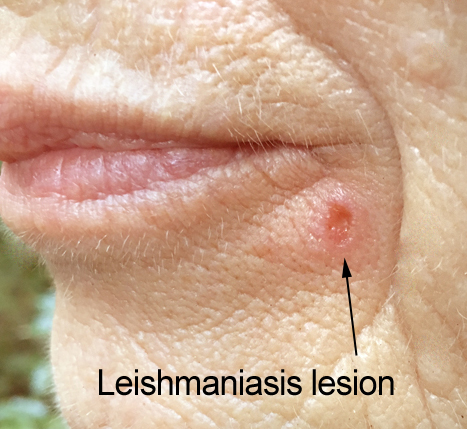
There have been some cases of leishmaniasis at BIB, and it is something you need to know about if you discover a sore that doesn’t heal after or while being here. One BIB owner bitten by a sandfly carrying leish parasites after a visit to BIB had doctors in Canada stumped upon her return to Canada. They did biopsies and other invasive procedures on her lesion because leishmaniasis was not on their radar. It was weeks before a correct diagnosis was made. If you have an unexplained lesion, have your doctor test for leishmaniasis before doing anything more invasive.
The standard treatment in Belize, Glucantime (GLOO-kun-teem), is a preparation of the heavy metal antimony, meglumine antimoniate. Treatment costs around $200usd, and involves a series of injections over time. In the US or Canada similar treatment can cost thousands of dollars. It’s very hard on the body, and not recommended if there is any alternative.
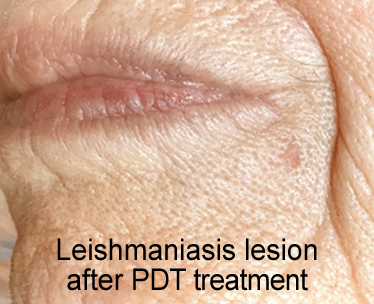

A BIB homeowner, Dr. Francesco Anello, researched a treatment strategy for cutaneous leish called photodynamic therapy (PDT), in which the ulcer is exposed to an intense light of a specific frequency. This treatment is being used in Israel and Honduras and found to be very effective. It may cause localized pain for a few hours, but has no lasting side effects. And it cures the cutaneous leish.
Don’t let the thought of getting leish scare you away from coming to BIB. People live here year-around and few of them ever experience chiclera. If you do, though, a PDT treatment should set things straight. Although leish lesions look bad, they are relatively painless unless you have to sit on them, or they’re in an area which creases or stretches frequently or is rubbed by clothing in the course of normal activities.

If you have a lesion that looks like these photos, go to a doctor immediately and get tested to find out which variety has infected you. If it is cutaneous leish, try the PDT therapy before you do anything more invasive (such as the Glucantime treatment. Glucantime should only be used as a last resort.).
There are two PDT machines available to BIBers. Ask around to find out where they are. Three or four treatments usually suffice, although if the lesion is caught before it’s the size of a match head, one treatment might work. So check before leaving BIB for any small, unhealed lesions (like the one in the Before photo above) that might respond to one treatment .
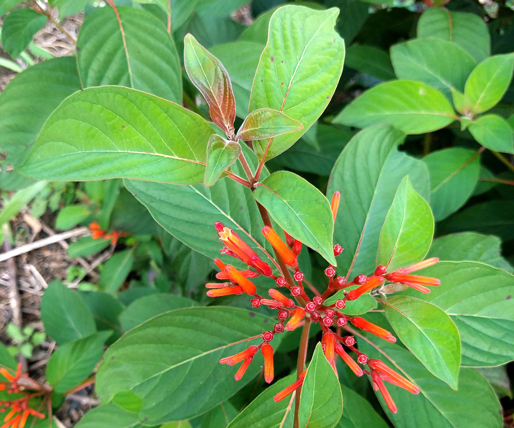
Polly Red Head (Hamelia patens), is a Belizean medicinal plant and a source of iodine used by locals to make a poultice for leish lesions. If you want to try this in addition to other treatments, there are Polly Red Head bushes alongside Hydro Road near BIB.
Look for 3-5’ shrubs with red flowers at the tips. The leaf veins and stems are reddish. Pick a handful of the leaves, mash them into a pulp, and press them to the sore with a firm bandage. Check in Rosita Arvigo’s Rainforest Remedies for other treatments.
Hi Renie. Thanks for such a well written and informative article. I will keep an eye out for that kind of wound here in Costa Rica.
Good idea, Jesse. It’s just as likely to be there as here.